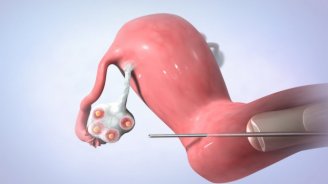
Everything You Need To Know About In Vitro Fertilization
In Vitro Fertilization is a form of ART (assisted reproductive technology) that involves manual combination of sperm and an egg in a lab dish, and transfer of the resultant embryo to a woman’s uterus.
The method of fertilization can be applied in the following cases; women with damaged and/or blocked fallopian tubes, unexplained infertility, male factor infertility (such as sperm motility and diminished sperm count) and couples with genetic disorders. It’s also ideal for women whose fallopian tubes were surgically removed as well as those with ovulation disorders, uterine fibroids or premature ovarian failure.
What does the in vitro fertilization process entail?
Step one
At this stage, the doctor prescribes suitable fertility medications to stimulate the production of an egg. Ideally, multiple eggs should be produced because some of them won’t get fertilized. The ovaries are examined through the process of trans-vaginal ultrasound. Additionally, samples of blood are taken to test the levels of hormones.
Step two
A minor surgery is conducted to retrieve the eggs. A hollow needle is guided through the pelvis with the help of ultrasound imaging. Medication is given to get rid of any discomfort.
Step three
The man is requested to produce sperms which have to be specially prepared.
Step four
The eggs and sperm are mixed and then stored in a special container to facilitate fertilization. The process is known as insemination. If the possibility of fertilization is low, ICSI (intra-cytoplasmic sperm injection) is applied. The eggs are closely observed to confirm the occurrence of fertilization as well as cell division.
Step five
Approximately four days after the fertilization process, the embryo is transferred from the container to the host’s uterus. A small tube/ catheter is used to effect the transfer. If the IVF process is successfully done, implantation occurs approximately eight days after the egg retrieval.
What if your husband is sterile or you produce unhealthy eggs?
In case your husband/ partner is sterile, or you (unfortunately) produce unhealthy eggs, you’ll have to ask a donor to donate eggs or sperms. In such cases, there are important legal issues that you must consider beforehand.
How successful is IVF?
The success of in vitro fertilization depends on factors such as; reproductive history, lifestyle, maternal age as well as cause of infertility.
In USA, the average live birth rate (LBR) for every IVF cycle is as follows; 42%, 35%, 25% and 15.5% for ladies aged below 35, 35- 37, 38- 40 and above 40 years respectively.
Possible side effects of IVF
If you go through an IVF procedure, you may experience one or more of the following side effects; mild cramping, tenderness in the breasts, mild bloating or constipation.
Side effects such as heavy vaginal bleeding, extremely high fever, pelvic pain or traces of blood in urine are very rare. If you experience any of them, get in touch with your doctor within the shortest time possible.
Associated risks of IVF
There are possible risks of undergoing in vitro fertilization, just like the case is with other medical procedures. You may experience headaches, bloating, mood swings, hot flashes or abdominal pain. In rare cases, OHSS (ovarian-hyper-stimulation-syndrome) may occur.
Do you have damaged and/or blocked fallopian tubes, unexplained infertility, a genetic disorder an ovulation disorder, uterine fibroids or premature ovarian failure. Does you husband suffer from male factor infertility (such as sperm motility and diminished sperm count)?
If your answer is yes, then you should seriously consider going through in vitro fertilization.
